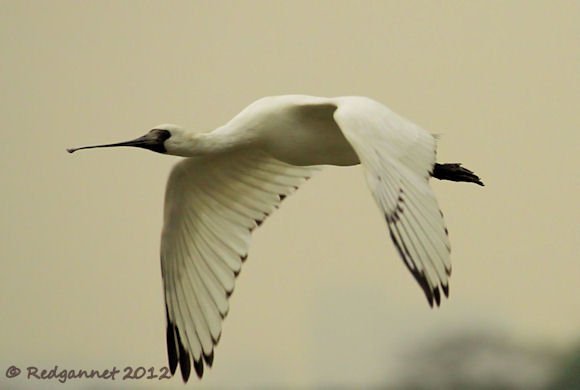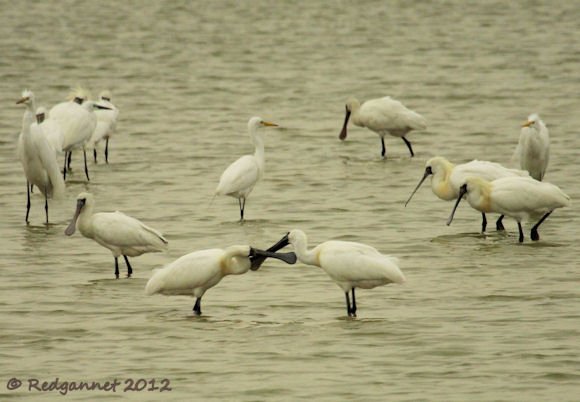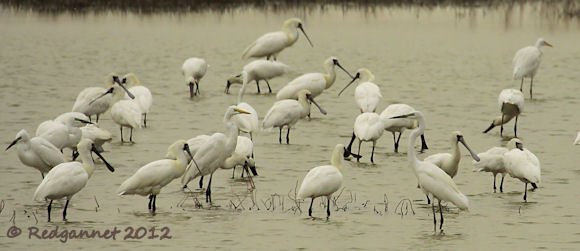
The story of the Black-faced Spoonbill is one of recovery. Hurray! From a global low of less than 300 birds in the late 80’s, the species has recovered to 2726, according to a survey in early 2014. Despite this recent comeback, it is still the rarest of the spoonbills as well as being the smallest (Platelea minor) and the most range-restricted. It is still endangered and the most recent survey showed a worrying stagnation in the population.

Habitat destruction, disease and hunting are still major problems that affect the conservation efforts, but the breeding sites and wintering grounds now have international protection. In Taiwan, two major sanctuaries have been allocated as part of the spoonbill recovery program. Captive breeding programs have not shown much success. Apparently it is difficult to differentiate between the sexes.

Young Black-faced Spoonbills have only a small amount of black facial skin, light colouring on their bills and show black at the tips of their primaries. They develop the black face, dark bill, yellow breast and shaggy crest as they reach breeding age after three or four years. Many of these potential breeders though will not nest. Perhaps they also have trouble telling who’s which.
Their restricted range is another major issue that threatens the success of the recovery program. In Taiwan, where around 60% of the birds spend the winter, they are reliant on the Large-scaled Mullet, but this small fish is also endangered so much of the conservation effort is directed at preserving the spoonbills’ food supply. When significant percentages of a population winter in close quarters, there is always a risk that disease could spread quickly through a flock. This happened in 2003 when 73 birds died from Avian Botulism.

It breeds on a few rocky islands in the Yellow Sea off the west coast of North Korea. It has a number of favoured wintering sites of which Taiwan is the most popular, harbouring around 60% of the world’s population. Other main wintering sites include Macau, Vietnam and Hong Kong. It was in Hong Kong, at the Mai Po reserve, that I had my encounters with Black-faced Spoonbills. On one occasion I was lucky enough to see over 160 of them from one of the hides there.
On the whole, though the spoonbill’s future is by no means assured, there is reason to be positive. International cooperation and understanding have led to a population increase of almost ten-fold over 25 years.













Thanks for this post! I love spoonbills. Decades ago, seeing a Roseate Spoonbill in Mexico was one of the first times I was overwhelmed by the beauty of a bird.
It’s good to read something positive, even if it is tempered! Another reason to try to visit Taiwan!
I too saw them first in Hong Kong. Like all spoonbills, they are lovely.